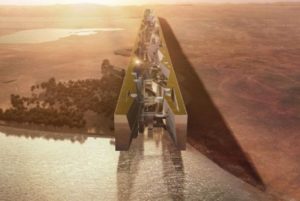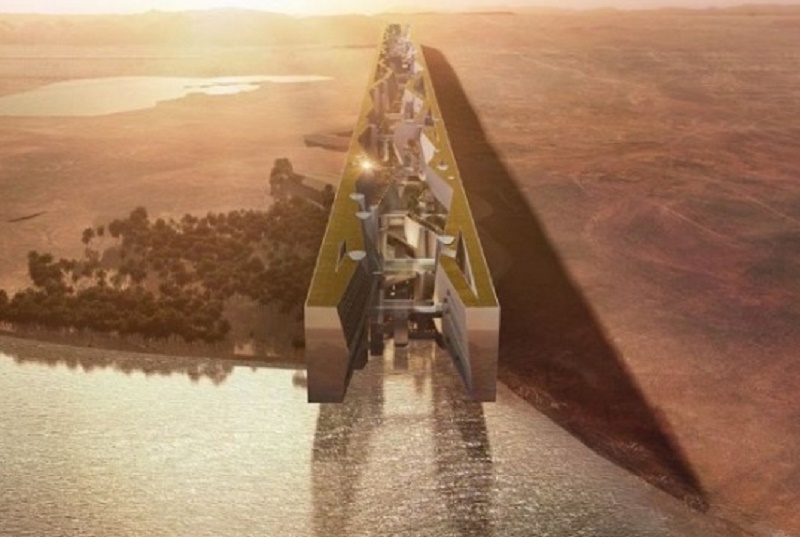The project—dubbed the Mirror Line—builds on a previous announcement by Prince Mohammed of plans to create a linear community and is expected to cost up to a trillion dollars and house about five million people when fully completed, according to people aware of the plan and the documents.

A high-speed train will run under the mirrored buildings, the documents, which are from last autumn, show. To feed its residents, the project plans vertical farming integrated into the buildings. For entertainment, the Mirror Line plans a sports stadium up to 1,000 feet above the ground. It will also boast a marina for yachts that lies underneath an arch in the two buildings.
The Mirror Line is one of a series of high-profile projects that make up Neom, a development the size of Massachusetts conceived by Prince Mohammed to diversify the kingdom’s economy from its reliance on oil. Owned by Saudi Arabia’s sovereign-wealth fund, Neom wants to attract foreign investment and create thousands of new jobs.
Importantly, the kingdom is also enjoying windfall revenue from high oil prices, which has allowed Prince Mohammed to press ahead on ambitious projects such as Mirror Line aimed at turning his country into one of the world’s top destinations—although plans for the project could still change.
If Saudi Arabia succeeds in building it, the structure would be like nothing else in the world. It is already challenging the urban planners who are designing it. For instance, they are facing a 2030 completion deadline imposed by the prince’s national transformation plan and must resolve many questions, such as how to manage the migration of millions of birds across corridors that the Mirror Line will intersect.
One of the biggest challenges for a structure made of two tall buildings running parallel to each other is the shade created. Lack of sunlight could be detrimental to health, the documents say.
The development also faces one challenge unique among construction worldwide: the curvature of the Earth.
Because the earth arches about 8 inches per mile, the documents say, designers propose leaving a gap at the top of the 2,600-foot modules to “bend” the structures around the world.
According to wsj















